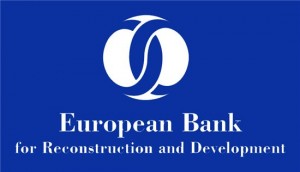 The crisis in and around Ukraine involving Russia and the resulting economic downturn is predicted to hinder the growth of many of the countries’ neighbours in Central Asia and beyond, says the latest economic report by the European Bank for Reconstruction and Development (EBRD) issued on May 14.
The crisis in and around Ukraine involving Russia and the resulting economic downturn is predicted to hinder the growth of many of the countries’ neighbours in Central Asia and beyond, says the latest economic report by the European Bank for Reconstruction and Development (EBRD) issued on May 14.
In January, the EBRD predicted a 2.7 percent growth rate for the transition region for 2014, but has now downgraded that expectation to just 1.4 percent. Growth at the rate of 1.9 percent is possible for 2015, the bank says – as long as the current crisis doesn’t escalate.
“The outlook for growth in the transition region has thus materially deteriorated compared with the January 2014 forecast, dashing hopes that the continuous decline in the region’s growth rate since 2011 would be reversed in 2014,” the EBRD said in the Regional Economic Prospects Report issued during its annual meeting and business forum in Warsaw, Poland.
Central Asia remains buoyed by large-scale hydrocarbon extraction projects, the report said. Most of the countries of the region experienced strong economic growth in 2013, with gross domestic product growth in Kazakhstan increasing from 5 percent in 2012 to 6 percent in 2013.
The report predicted that Customs Union reductions in non-tariff trade barriers, when enacted, would positively impact the region. However, Kazakhstan’s growth is expected to slow to 5 percent again in 2014, due to reduced consumer spending and Russia’s downturn. Nonperforming loans in excess of 30 percent of all loans were identified as a drag on growth, and inflation is expected to increase following the tenge devaluation in February.
Kazakhstan and other Central Asian countries may face increased downward pressure on their currencies, should the Ukraine crisis escalate and lead to Russia’s being harder impacted by Western pressure. In a press release, EBRD Lead Economist for Central Asia Agris Preimanis said, “The weakening of remittance flows, as well as exports (to a lesser degree), are expected to be a factor [in slowing growth]. Any further escalation of the Russia-Ukraine crisis poses significant downside risk to growth and would put downward pressure on currencies in the Central Asian region.”
Forecasts for Russia and Ukraine
In what the EBRD identified as the most likely scenario, Ukraine would return to recession in 2014, its economy contracting by 7 percent, and would not grow in 2015. The Russian economy would stagnate in 2014 and show only minimal growth the following year.
However, with the crisis still evolving, economic forecasts remain uncertain. Less cheerful scenarios, including the imposition of financial sanctions, envision Russia falling into recession, a sharper contraction in Ukraine and an end to growth in 2014-15.
“At this point, the Russia-Ukraine crisis would start impacting the global economy,” the report says.
Russia’s weak growth outlook has worsened as a result of its involvement in the situation with Ukraine, which the EBRD says has affected investor confidence and could lead to increasing capital flight. High inflation and pressure on the rouble continue.
“Ukraine’s economy is expected to undergo a major, though gradual, adjustment with significant short-term output costs,” the EBRD said. Imbalances would be reduced through the country’s International Monetary Fund (IMF) programme and support from donors, including the EBRD. Without further escalation, the EBRD said, “necessary structural reforms would be implemented on schedule and a systemic banking crisis would be averted, though fiscal costs of bank recapitalisation may turn out to be significant.” Even without further escalation, however, developments in eastern Ukraine would weigh on growth.
Predictions for the rest of the EBRD region
Elsewhere, predictions are somewhat rosier. The Eurozone recovery is taking hold, the EBRD said, which is benefiting central Europe and the Baltic states, as well as southeastern Europe. Growth in these regions in 2013 was stronger than anticipated, the report said, though the Russian slowdown may affect tourism in Bulgaria and Montenegro. Growth in Eastern Europe and the Caucasus region had been accelerating last year, but weak investment activity and the crisis in Ukraine has caused the outlook there to worsen.
Turkey had a better economic year in 2013 than expected, but its risk premium has now increased and is expected to affect domestic demand and growth. Its tourism and export sectors may also be affected by events in Ukraine. Turkish growth, predicted in January to be 3.3 percent, has been downgraded to 2.5 percent
Egypt, Jordan, Morocco and Tunisia, the four countries in the southern and eastern Mediterranean region (SEMED) where the EBRD invests, are not expected to be strongly affected by the Ukraine-related crisis, but may see boosts to some of their tourism and other sectors due to the Eurozone recovery. Growth is expected to increase to 3 percent. The forecast is uncertain, the report warned, and lower grain and wheat exports to the region, especially to Egypt, could lead to higher import bills.


